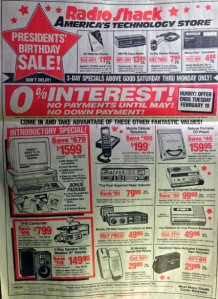Every year the Constellation SuperNova Awards recognize eight individuals for their leadership in digital business. Nominate yourself or someone you know by August 7, 2015.
The SuperNova Awards honor leaders that demonstrate excellence in the application and adoption of new and emerging technologies.
In its fifth year, the Constellation SuperNova Awards will recognize eight individuals who demonstrate true leadership in digital business through their application and adoption of new and emerging technologies. We’re searching for leaders and teams who have innovatively applied disruptive technolgies to their business models as a means of adapting to the rapidly-changing digital business environment. Special emphasis will be given to projects that seek to redefine how the enterprise uses technology on a large scale.
We’re searching for the boldest, most transformative technology projects out there. Apply for a SuperNova Award by filling out the application here:
https://www.constellationr.com/node/3137/apply
SuperNova Award Categories
• Consumerization of IT & The New C-Suite – The Enterprise embraces consumer tech, and perfects it.
• Data to Decisions – Using data to make informed business decisions.
• Digital Marketing Transformation – Put away that megaphone. Marketing in the digital age requires a new approach.
• Future of Work – The processes and technologies addressing the rapidly shifting work paradigm.
• Matrix Commerce – Commerce responds to changing realities from the supply chain to the storefront.
• Next Generation Customer Experience – Customers in the digital age demand seamless service throughout all lifecycle stages and across all channels.
• Safety and Privacy – Not ‘security’. Safety and Privacy is the art and science of the art and science of protecting information assets, including your most important assets: your people.
• Technology Optimization & Innovation – Innovative methods to balance innovation and budget requirements.
5 reasons to apply for a SuperNova Award:
• Exposure to the SuperNova Award judges, comprised of the top influencers in enterprise technology
• Case study highlighting the achievements of the winners written by Constellation analysts
• Complimentary admission to the SuperNova Award Gala Dinner and Constellation’s Connected Enterprise for all finalists
(November 4-6, 2015) lodging and travel not included
• One year unlimited access to Constellation’s research library
• Winners featured on Constellation’s blog and weekly newsletter
Learn more about the SuperNova Awards.
What to expect when applying for a SuperNova Award. Tips and sample application.


![State of retail graphic[1]](https://thethinkingfrog.files.wordpress.com/2015/01/state-of-retail-graphic1.png?w=355&h=218)


